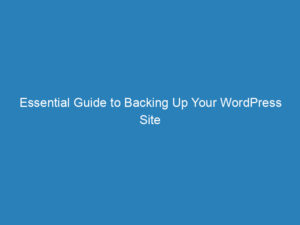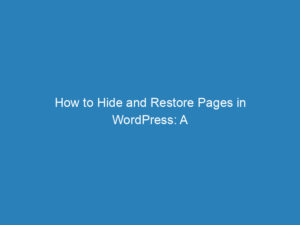
Optimizing WordPress Tags and Categories: Best Practices for Enhanced User Experience
Creating a user-friendly website requires careful organization and navigation, particularly when using open-source platforms like WordPress. Among the various tools available for content structuring, tags and categories stand out as essential elements for creating a seamless user experience. While both serve the purpose of organizing content, they do so in distinctly different ways. Understanding how to implement tags and categories effectively can greatly enhance your website’s usability and SEO performance.
Understanding Categories
Categories are fundamental in organizing content into broad groupings. When managing a blog or content-heavy site on WordPress, categories allow you to cluster topics, making it easier for visitors to find relevant information quickly. They serve as an overarching framework that gives users a clear idea of what subjects your site covers.
Another advantage of categories is their hierarchical structure, which includes parent and child categories. This allows for a well-organized interface, reducing clutter and facilitating easier navigation. For instance, a parent category like “Travel” could have child categories such as “Destinations” and “Travel Tips.” However, if you fail to assign a category to a post, it will default to “Uncategorized,” so it’s important to categorize your content appropriately.
Understanding Tags
Tags offer a more granular method of organizing content. Unlike categories, which can be hierarchical, tags are standalone keywords that highlight specific details related to your posts. They enhance discoverability by allowing users to search for content using particular keywords. While not mandatory in WordPress, utilizing tags can significantly improve your SEO and facilitate easier navigation within your site. When choosing tags, aim for keywords that accurately represent your content.
Best Practices for Implementing Tags and Categories
While tags and categories are crucial for content organization, moderation is key. Overusing them can lead to confusion and disorganization, which detracts from the user experience and can complicate your site’s backend management.
Keep It Clean
- Assign only one or two categories per post to maintain clarity and organization.
- Ensure that each category contains at least 10 to 20 posts to avoid having categories with minimal content.
- Although you can add multiple tags to a post, focus on those that directly relate to the content and align with your categories.
Keep It Consistent
Consistency is vital when managing tags and categories. Avoid creating duplicate tags that differ only in singular or plural forms. For instance, if your post is about e-commerce, choose one tag like “conversion” instead of using both “conversion” and “conversions.” This practice not only streamlines your tags but also helps improve your SEO. When creating new tags, consider using existing ones to maintain uniformity and avoid clutter.
Consider Plugins
While the built-in taxonomy features of WordPress are effective, utilizing plugins can elevate your content organization further. There are numerous plugins available, ranging from free to premium options, that can help you manage your tags and categories more efficiently. Tools like TaxoPress and Category Order allow for easy modifications and reorganization of your categories. This flexibility can contribute to a more organized backend and improve overall functionality.
By thoughtfully implementing tags and categories, you can create a more structured and engaging experience for your users, enhancing their interaction with your website.

